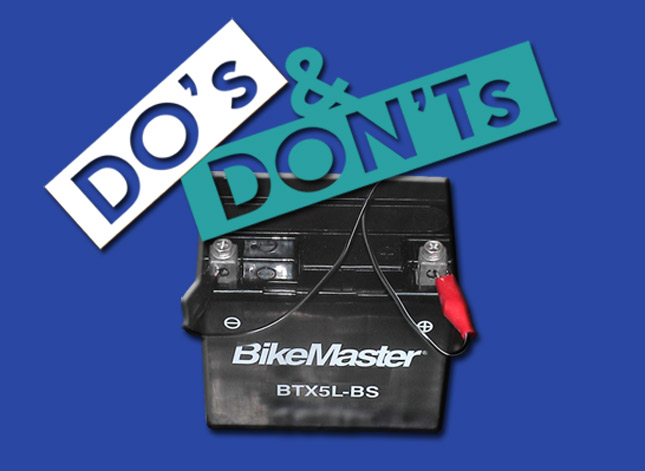 There are a lot of things which you need to know in order to service your bike on your own. It’s a difficult process and takes years to become a motorcycle expert, but nevertheless, you can start by picking apart small and obvious things in your bike. So, today we are going to talk about the list of Dos and Don’ts while upgrading a motorcycle battery. Let’s begin.
There are a lot of things which you need to know in order to service your bike on your own. It’s a difficult process and takes years to become a motorcycle expert, but nevertheless, you can start by picking apart small and obvious things in your bike. So, today we are going to talk about the list of Dos and Don’ts while upgrading a motorcycle battery. Let’s begin.* Do check the battery type:
If you want to change your battery to a new one, then always use the same type of battery, which is pre-installed on the bike.
* Don’t change the battery type:
If you are currently using a Lead-Acid battery then don’t switch it to a Lithium-ion battery or the other way around.
* Do upgrade your battery to a larger capacity:
There is little to no harm in upgrading to a bigger battery. As a bigger battery keeps the AMP draw lower while keeping the voltage higher.
* Don’t upgrade to a battery which doesn’t supply 12 volts:
12 volts batteries are standard on almost all vehicles and actually provide up to 13 volts when fully charged. These batteries are enough for almost all the electronics onboard.
* Do check your battery Charge:
Before throwing out your old battery, try charging your battery first [Link] because many times, a recharged battery can function just as well as a new one.
* Don’t throw your battery:
Never be in hurry to change your battery every time it flat lines, try to check the issue yourself first. If you don’t seem to find it, then visit a mechanic, because sometimes the problem can be as small as having less battery fluid in a perfectly good battery, which you’re about to throw out.
* To remove the battery yourself:
Open the side panel, or the under seat of your bike. Disconnect the wires, first the negative one then the positive one. When installing the battery again, first attach the positive cable then attach the negative one.
* Don’t worry about the battery on the concrete floor:
If your battery is in a plastic case then you can very easily put down your battery on the concrete floor, while you open your side panels to change it. The old myth of "battery leaking while kept on the concrete surface" is applicable only to old batteries which were enclosed in steel.
* Do Charge your battery after a period of 3 years:
After this period, there is a good chance that your bike’s battery is already gone. As the electrolyte dissolves in the water and the Lead plates become coated with Lead Sulfate, which decreases battery’s efficiency.
* Don’t forget to wear eye and hand protection:
Lead-Acid is highly corrosive in nature and cause severe burns. Never change the battery without proper protection on your hands and eyes.
These are some of the Dos and Don’ts that you should keep in your mind when changing/upgrading your bike's battery. Remember that you’re always encouraged to upgrade to a bigger capacity battery, just make sure that it is a 12 volt one, is of the same type and fits properly in the provided space. The only downside of upgrading to a bigger battery is that while charging the battery at home using a battery charger, more time will be needed.
There you have it, follow these guidelines along with the steps in the manual of your bike, and you’re good to go. For more motorcycle maintenance tips, stay tuned to BikesMedia.
By: Yetnesh Dubey











